Whilst I was importing my DPCU shirt I did my usual thing of trying to be as efficient as possible with transport costs and bundled a few other items in together, to include this Australian Navy issued uniform shirt in their specific Disruptive Pattern Navy Uniform (DPNU) camouflage.
Adopted in 2008, the Australian Navy’s reasoning for issuance of this pattern was apparently in order that they had a service specific camo that was also distinctly Australian in origin due to it’s shapes; rather than for any combat related purpose. Personally I think this seems short sighted as 99% of even serving military persons outside of Australia are not going to automatically recognise the shapes in this camo as being Australian. A plain blue or grey uniform in the same fabric would have been significantly cheaper and served the same utility aboard ship.
That aside however, 2000-2010 was the decade of global adoption of service-specific bad camo patterns, so DPNU is certainly not alone. As it happens, the Australian Navy and Air Forces have even more recently adopted further examples of terrible and impractical camos in the form of the RAAF GPU and the RAN MMPU which replaced DPNU. Though I still do want to have both in my collection admittedly, especially the Navy version as to me that looks like a cool ‘urban’ use version of Multicam, even though it wouldn’t be really and has more in common with the likes of Kryptek Typhon/Raid and ATACS Ghost/LE.
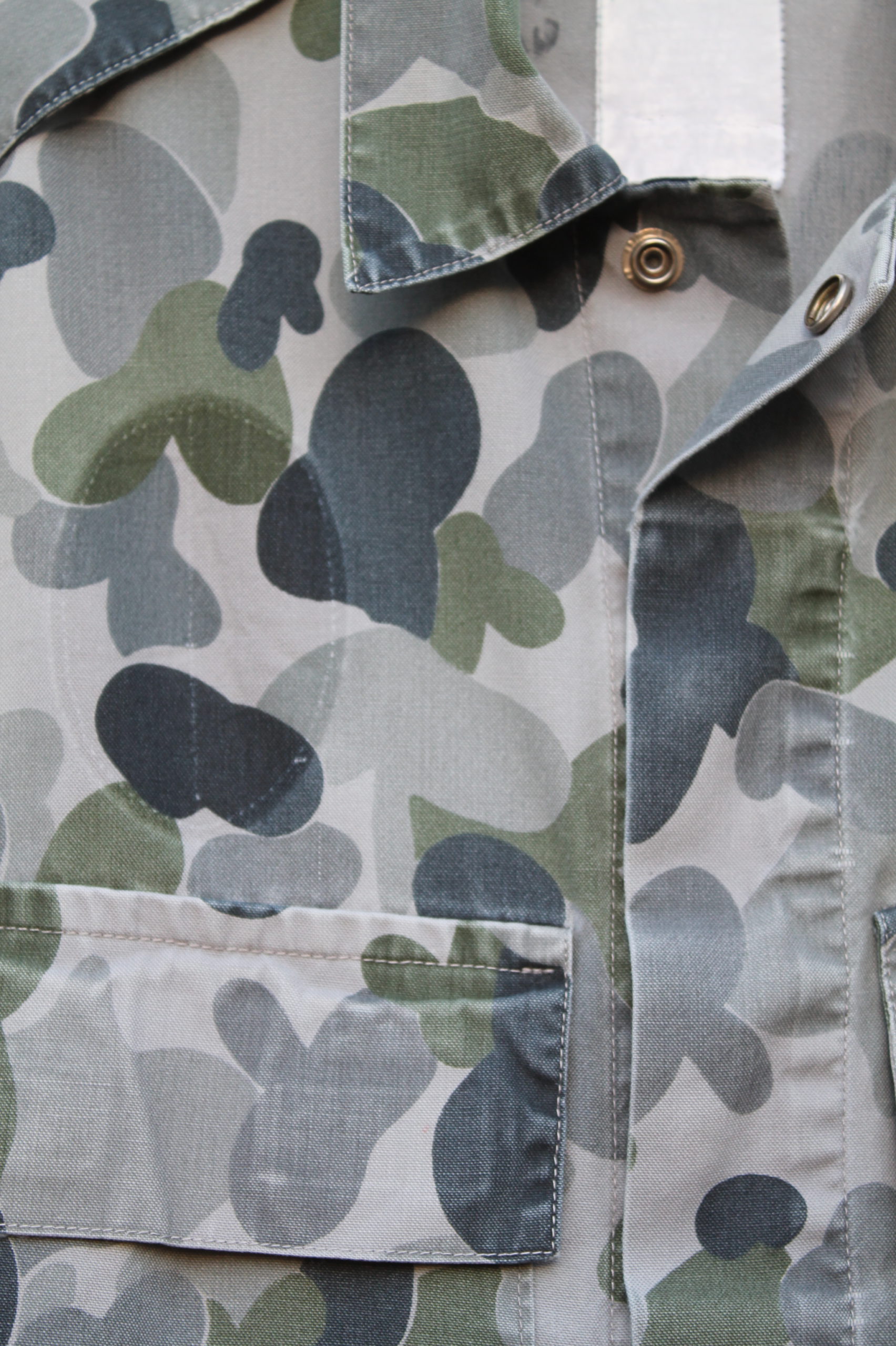
Main closure on this shirt is, unusually, via metal press studs which feels like something of a throwback to some sort of heavy duty overall type of garment. Collar is entirely standard with no features worthy of note and there are traditional style buttoned epaulettes on each shoulder.
The darker/less faded area shown here was previously covered by a loop field that would have been used to mount issued patches denoting location of service etc, but as I don’t personally own any such specifically shaped oval patches I removed the loop.
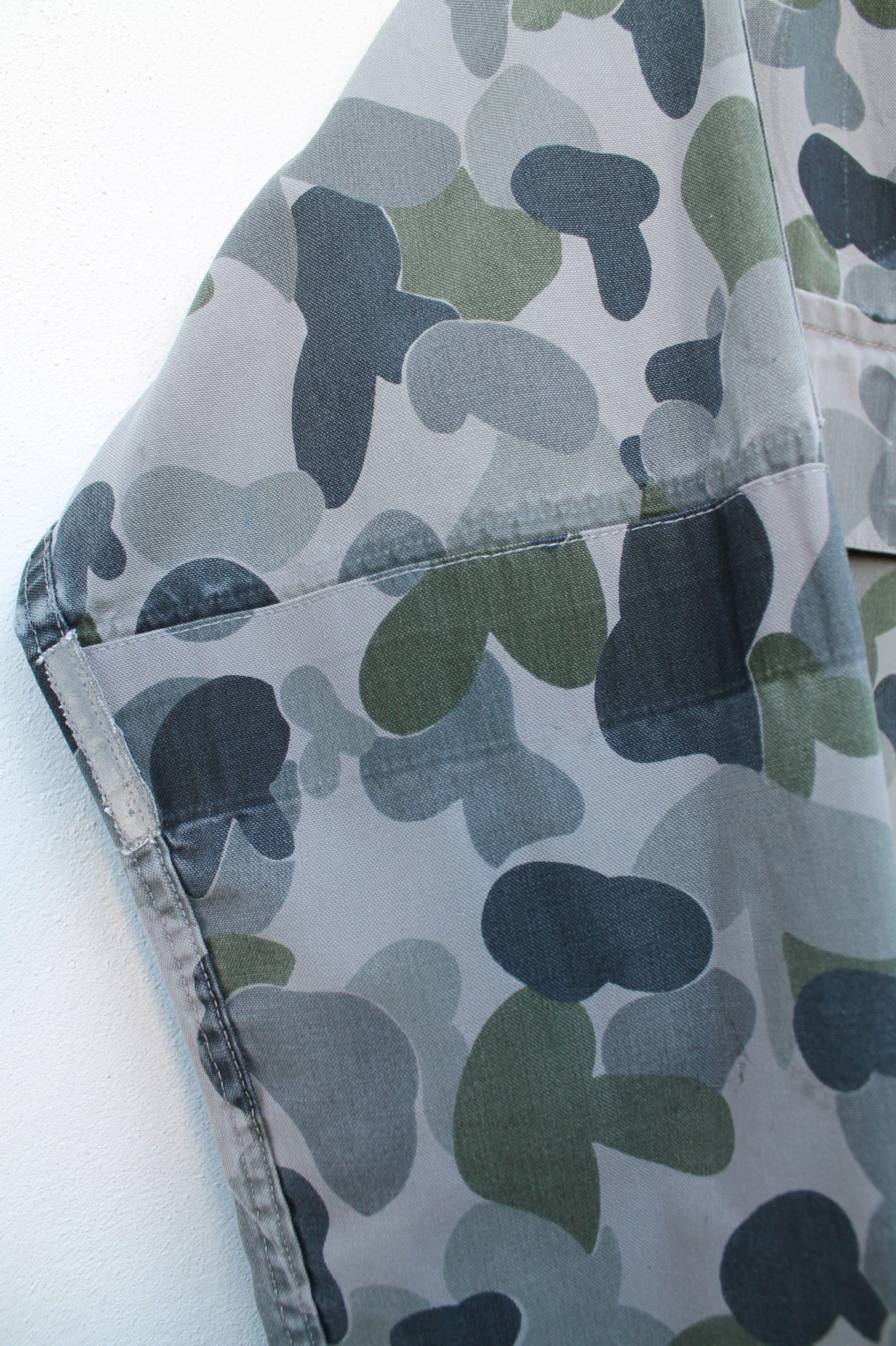
When leaving the factory these shirts all feature a strip of silver reflective tape around each upper arm, which I have mostly removed for my purposes, though a piece remains here on the left edge where I was unable to remove the stitching without comprising the construction of the sleeve itself. This reflective material is intended to aid in spotting a crew member who may have fallen overboard, though this camo pattern in a mixture of greys and dark blue and green also probably hides the body of that person extremely well as they float the sea I would imagine – doubly so in rough seas or dim/night time conditions. A little counterintuitive overall.
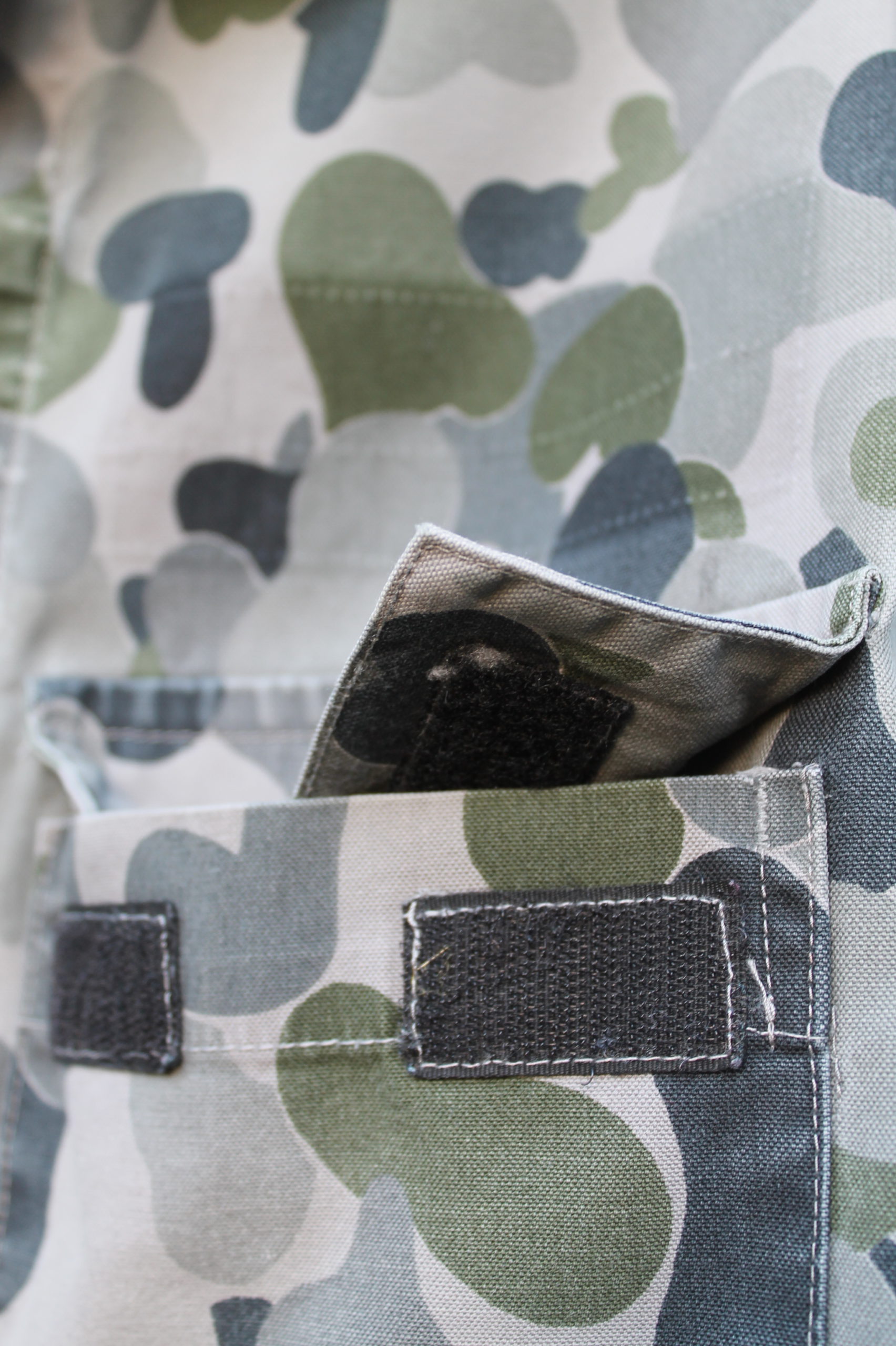
The two conventional chest pockets close with simple hook and loop fields and lack any pleating for expansion. There is also a 2 slot pen caddy mounted on the right arm. Overall, more of an administrative garment despite being made in a camouflage pattern, which makes sense for personnel aboard a military vessel. Taken holistically I would say the design sits somewhere between a purely tactical ensemble and construction or warehouse apparel.
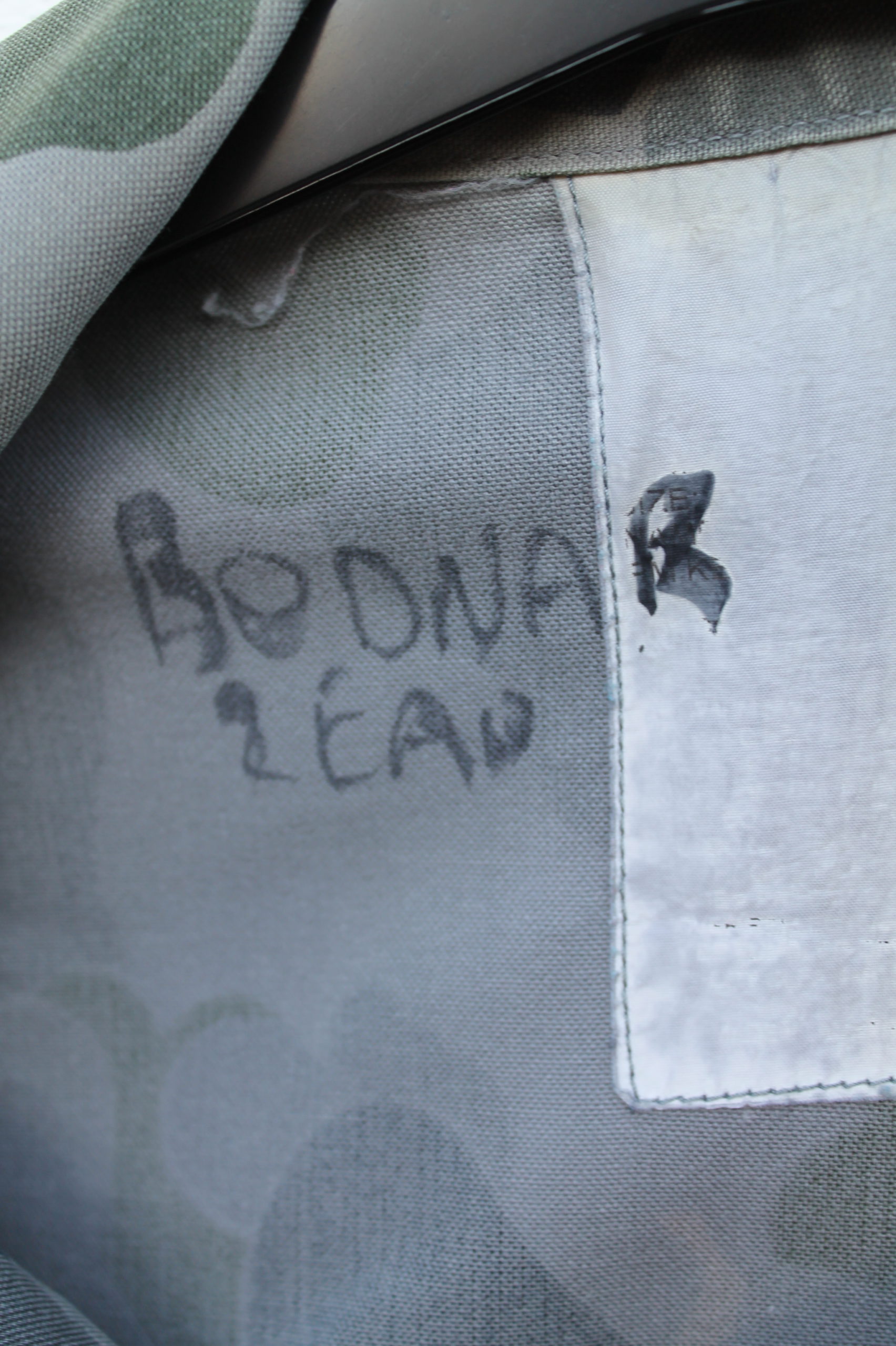
Given that original examples of this camouflage are not super common and that I knew I would be taking the seam ripper to this shirt, I opted to purchase a well used example so the label has been laundered beyond legibility. After a little research however I was able to learn that the fabric used is the same 75/25 Cotton/Nylon blend used in the DPCU pattern uniforms, however I can tell from just a quick touch that the DPNU fabric is significantly thicker and heavier per surface area, it also lets far less light through.
As it happens I also picked up Mr Bodnar’s matching DPNU trousers which will be depicted here on the blog soon.
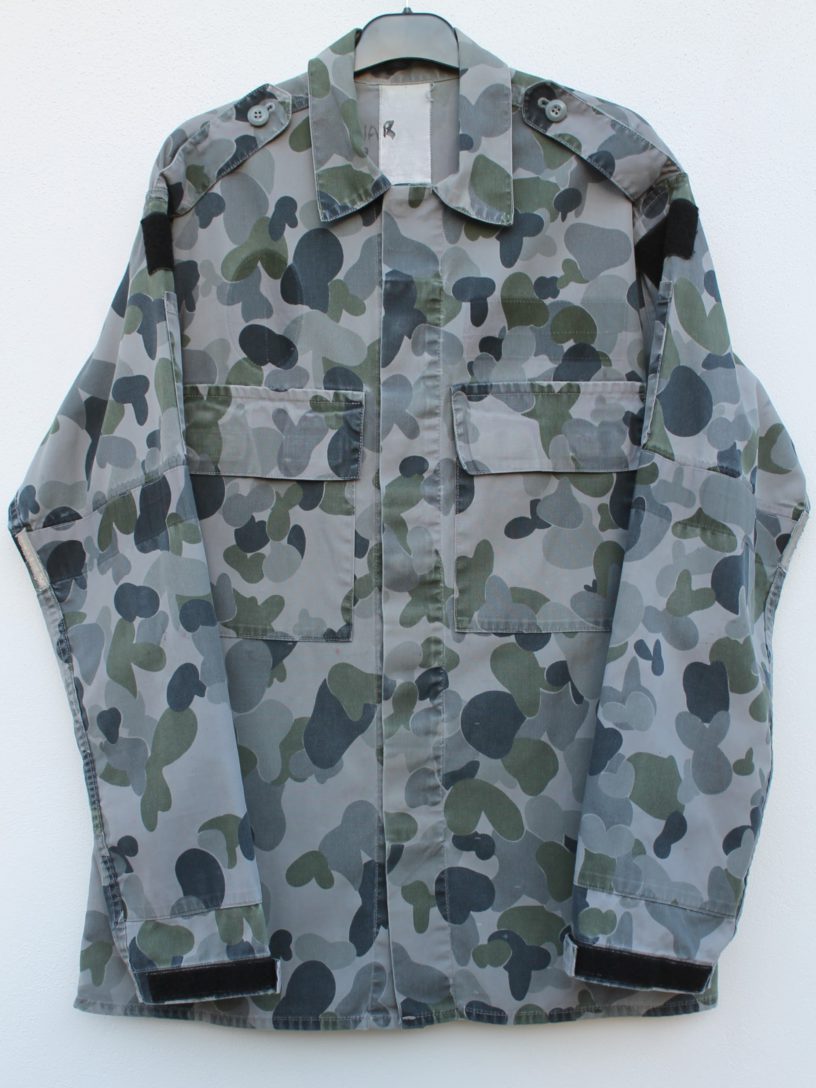
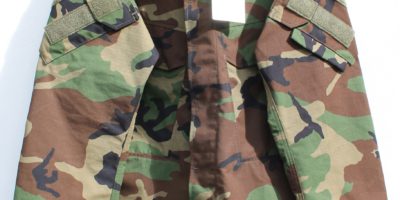
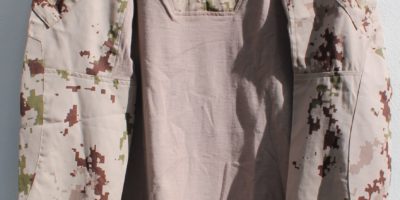
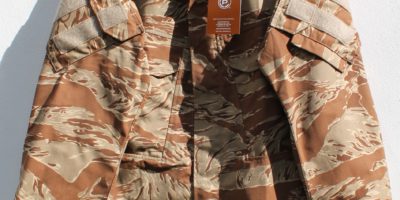
Rob
I have always thought when the Australian Navy scrapped the old grey No8’s work uniforms for patterned attire it was a retrograde step (& now retrograde steps). In a “man overboard” situation patterned attire of any sort would make recovery of that person next to impossible in open ocean and in any but perfect visibility. Rob (ex RAN submariner)
Ian
Totally agree use to always wear overalls and they were just navy blue. You don’t need camouflage at sea.
TheFull9
Thanks for coming by mate, appreciate the input from someone formerly in the real job itself.
John Andrew McKay
Any ideas were I can buy one